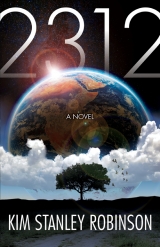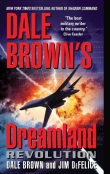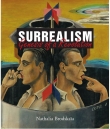
Текст книги "2312"
Автор книги: Kim Stanley Robinson
Соавторы: Kim Stanley Robinson
Жанр:
Научная фантастика
сообщить о нарушении
Текущая страница: 17 (всего у книги 36 страниц)
Lists (8)
Prometheus, Pandora, Janus, Epimetheus, and Mimas; these are the moons that shepherd Saturn’s rings.
The rings are only 400 million years old, the result of a passing Kuiper belt ice asteroid being stripped to its core when it passed Saturn too closely.
Mimas, the bull’s-eye moon, is 400 kilometers in diameter, while its crater Herschel is 140. The Herschel impact nearly blew Mimas apart.
Hyperion is a fragment of a similar collision that did blow a moon apart; it is shaped like a hockey puck. The impact caused flash steam explosions across a plane and split the moon as if spalling granite. The facet left behind is pocked like a wasps’ nest by a field of rimless dust-filled craters.
Pandora is shaped like a jelly bean.
Tethys and Dione were both about 1,100 kilometers across (think France), both fractured all over their surfaces, etched by canyons with mile-high walls. Tethys’s Ithaca Chasma is twice as deep and four times as long as the Grand Canyon, and a thousand times older, very battered by Saturn’s everlasting civil wars.
Dione, on the other hand, was disassembled by self-replicating ice cutters in the 2110s, and the Hector-sized segments were then directed downsystem to Venus. They struck Venus on a line parallel to the equator and provided Venus with a deep ocean bed and the water to fill it, while also knocking a good bit of the choking Venusian atmosphere off into space.
Rhea is as wide as Alaska, with the usual plethora of craters, including fresh ones that throw bright ice rays out from their centers.
Iapetus orbits seventeen degrees out of the plane of Saturn’s equator and thus has one of the best views of the rings; is therefore popular. The bulge is the biggest city in the Saturnian system.
Epimetheus is a misshapen pile of loosely consolidated rubble. It switches orbits with the moon Janus every eight years; they are co-orbital moons, very rare—a sign of past impacts.
Enceladus is covered by braided spills of ice. No craters—the ice surface is too new, as it is continuously resurfaced from the liquid-water ocean in the depths. Heat sources boil some of this carbonized water, creating geysers that shoot many kilometers into space. The water quickly freezes in its flight, and some of it makes it up to the slender E ring; the rest falls back down and under its own weight turns to firn and then back to ice again. A suite of microscopic life-forms was discovered in the Enceladan ocean in the year 2244, and scientific stations have been established on its surface, as well as a cult of votaries who ingest a suite of the alien life-forms, to unknown effect.
There are twenty-six irregular small moons. These are all Kuiper belt objects, captured as they crossed Saturn’s earliest gas envelope. Phoebe, at 220 kilometers across, is the largest of these, and it has a retrograde and highly inclined orbit, twenty-six degrees out of the plane; thus another popular viewing platform.
Titan, by far the largest Saturnian moon, is bigger than Mercury or Pluto. More about Titan later.
Extracts (9)
One question for computability: is the problem capable of producing a result
If a finite number of steps will produce an answer, it is a problem that can be solved by a Turing machine
Is the universe itself the equivalent of a Turing machine? This is not yet clear
Turing machines can’t always tell when the result has been obtained. No oracle machine is capable of solving its own halting problem
A Turing jump operator assigns to each problem X a successively harder problem, X prime. Setting a Turing machine the problem of making its own Turing jump creates a recursive effect called the Ouroboros
All problems solvable by quantum computers are also solvable by classical computers. Making use of quantum mechanical phenomena only increases speed of operation
two popular physical mechanisms, dots and liquids. Quantum dots are electrons trapped inside a cage of atoms, then excited by laser beams to superposed positions, then pushed to one state or the other. Quantum liquids (often caffeine molecules because of the many nuclei in them) are magnetically forced to spin all their nuclei in the same spin state; then NMR techniques detect and flip the spins
Decoherence happens at the loss of superposition and the resulting either/or. Before that a quantum calculation performs in parallel every possible value that the register can represent
Using superposition for computation requires avoiding decoherence for as long as possible. This has proved difficult and is still the limiting factor in the size and power of a quantum computer. Various physical and chemical means for building and connecting qubits have increased the number of qubits possible to connect before decoherence collapses the calculation, but
Quantum computers are restricted to calculations that can be performed faster than decoherence occurs in the superposed wave functions. For over a century this restricted time for a quantum computing operation to less than ten seconds
Qubes are room-temperature quantum computers with thirty qubits, the decoherence boundary limit for circuit-connected qubits, combined with a petaflop-speed classical computer to stabilize operations and provide a database. The most powerful qubes are theoretically capable of calculating the movements of all the atoms in the sun and its solar system out to the edge of the solar wind
Qubes are only faster than classical computers when they can exploit quantum parallelism. At multiplication they are no faster. But in factoring there is a difference: to factor a thousand-digit number would take a classical computer ten million billion billion years (lifetime of universe, 13.7 billion years); using Shor’s algorithm, a qube takes around twenty minutes
Grover’s algorithm means that a yearlong search using a classical computer in a random walk of a billion searches a second would take a qube in its quantum walk 185 searches
Shor’s algorithm, Grover’s algorithm, Perelman’s algorithm, Sikorski’s algorithm, Ngyuen’s algorithm, Wang’s algorithm, Wang’s other algorithm, the Cambridge algorithm, the Livermore algorithm,
entanglement is also susceptible to decoherence. Physical linkage of quantum circuits is necessary to forestall decoherence to useful time frames. Premature or undesired decoherence sets a limit on how powerful qubes can become, but the limit is high
it has proved easier to manipulate superposition than entanglement for computing purposes, and therein lies the explanation of many
The quantum database is effectively distributed over a multitude of universes
the two polarized particles decohere simultaneously no matter the physical distance between them, meaning the information jump can exceed the speed of light. The effect was confirmed by experiment in the late twentieth century. Any device that uses this phenomenon to communicate messages is called an ansible, and these devices have been constructed, but undesired decoherence has meant the maximum distance between ansibles has been nine centimeters, and this only when both were cooled to one millionth of a K above absolute zero. Physical limitations strongly suggest further progress will be asymptotic at best
powerful but isolated and discrete, somewhat like brains
questions of Penrose quantum effects in the brain have been effectively rendered moot, as these also occur in qubes by definition. If both structures are quantum computers, and one of them we are quite certain has consciousness, who is to say what’s going on in the other
human brain operations have a maximum theoretical speed of 10 16operations per second
computers have become billions to trillions times faster than human brains. So it comes down to programming; what are the operations actually doing
hierarchical levels of thought, generalization, mood, affect, will
super-recursive algorithms, hypercomputation, supertasks, trial-and-error predicates, inductive inference machines, evolutionary computers, fuzzy computation, transrecursive operators,
if you program a purpose into a computer program, does that constitute its will? Does it have free will, if a programmer programmed its purpose? Is that programming any different from the way we are programmed by our genes and brains? Is a programmed will a servile will? Is human will a servile will? And is not the servile will the home and source of all feelings of defilement, infection, transgression, and rage?
could a quantum computer program itself?
WAHRAM AND SWAN AND GENETTE
Wahram saw Swan emerge from the lock door, looking around for him, and when she saw him, he waved, and then she did too, her expression pinched, he thought, her head tilted to the side. She looked at him in quick glances—she didn’t know how he would be. Suddenly he remembered that in the actual flesh she was a big bag of problems. He nodded a little deeper than he would have normally, trying to reassure her, and then thought that that might not be enough, and extended both hands, realizing as he did so that he was already back in a different world, Swancentric and intense. She threw herself on him in a rush, and he felt sure it looked like he was hugging back, or had even invited the hug.
Jean Genette emerged from the lock and stood looking up at them, and Wahram greeted him with another bow.
“So you want to find one of the hanging ships?” he said.
They did. Apparently it might have something to do with the attack on Terminator. So Wahram led them across the spaceport to the gate for the railgun launcher angled to send ferries into polar orbits around Saturn. These orbits were popular for viewing the rings and the hexagonal storm at Saturn’s south pole. Wahram had already gotten permission from the authorities to take a cloud diver into the upper reaches of the planet; probably the council was happy to have him involved, as the Saturnian liaison to the incursion.
They took off with only a pilot and crew aboard with them, and after they were cast toward the north pole, Swan and the inspector told Wahram what they had been doing since they’d left Mercury. Wahram, feeling uneasy that he could not fully reciprocate and tell them about his activities, given the council’s orders, compensated by asking them a lot of questions about the investigation and its results so far. These turned out to be very interesting, even disturbing, and Wahram pondered to the point of a certain distraction the idea that there might be someone out there killing whole terraria. That the investigation had reduced their likeliest suspect pool to the population of Earth did not strike him as remarkable progress. All trouble comes from Earth, as the saying had it.
The cloud diver was not a big ship, and though it was very fast, the trip still took long enough for Swan to begin to exhibit the signs of distress and antsiness he remembered so well. Then happily they were above Saturn’s north pole, looking down at the dark side of the rings, as it was the northern winter. From behind the sun the rings were peach in tone, the circumferential scoring so finely etched and yet so vast that one could not help being a bit taken aback. Even on their dark side the rings were far brighter than the nightside of the planet, making for an aura or halo effect of eldritch beauty, all framing the deep blue of Saturn’s winter north.
Swan stared out the window, floating in her restraints, for the moment speechless. Wahram enjoyed this response, and not just because of the relief of the sudden silence. For him the polar view of Saturn was a perpetually glorious thing, the finest view in the solar system.
Down they dove toward the big planet, until it lost its sphericity and became a gorgeous pastel cobalt—the blue floor of the universe, it seemed, with the black of space only slightly domed over it. It looked almost like two planes only slightly separated, blue and black, meeting at the horizon like planes in elliptic geometry.
Soon after that they were down among the stupendous thunderhead armadas tearing east in this particular zone, around the seventy-fifth latitude. Royal blue, turquoise, indigo, robin’s egg—an infinity of blue clouds, it seemed. In the latitudinal band farther south the wind flew hard in the opposite direction; two thousand–kilometer–per–hour jet streams were therefore running against each other, making the shear zone a wild space of whirlpooling tornadoes. It was important to keep a distance from such a violent interface, but as the latitudinal bands were thousands of kilometers wide, this was not difficult.
Unlike Jupiter, there were no radiation fields created by the smaller giant, so over years a not-insignificant population of floating ships had taken refuge in the upper clouds of Saturn; also some platform habitats, hung from immense balloons. The balloons had to be exceptionally large to provide any buoyancy, but once they did, the clouds provided shelter that was variously physical, legal, and psychological. The league kept track of these cloud floaters when possible, but if they sank deep enough in the clouds and went quiet, they could be elusive.
Now their little diver flew among thunderheads a hundred kilometers tall, and though it was a commonplace to say that perspective was lost in situations like this, such that all sizes looked much the same, it wasn’t really true: these thunderheads were clearly as big as entire asteroids, rising out of a deeper array of flatter cloud formations so that they saw below them masses of nimbus and cirrus, cumulus, festoons, barges—really the whole Howard catalog, all snarling through and over and under each other and constituting what passed for the surface of the gas giant. Off to the distant south they could still sometimes make out the nearest shear line and its ripping tornado funnels, its broad-domed hurricane tops. Sometimes in the middle of their own band they flew over a slower funnel and could look deep into the blue depths of the planet, gaseous for as far as they could see and much farther, but in appearance much like holes of mist that gathered at their bottoms to liquid. Every once in a while a high stray cloud would prove unavoidable, and the view out of the craft would suddenly reduce to a dim blue flashing, and a tumultuous tremor would buck the craft in ways that even the quickness of the pilot AIs could not entirely damp. They would tremble and toss until they regained the clear blue again, now bluer than ever. For the most part they moved downstream with the flow of the wind, but also made the occasional reach across it. Resisting the wind too much threw them around about as much as being inside a cloud.
Ahead they could see their canyon of clear space narrowing until it was pinched to nothingness. Beyond that swirled a hurricane so big it could have floated the Earth on it like St. Brendan’s coracle. “We have to go over that,” their captain said, and with a sweet curve their craft ascended until the flat dome of the hurricane lay spinning below them. Overhead, the steady stars stood in their customary places.
“Are there fliers?” Swan asked. “Does anybody fly these cloud canyons in birdsuits?”
Wahram said, “Yes, a few. Usually they’re scientists doing their work. Until recently it has been considered too dangerous to visit. So this space has not yet been cultured to the extent you are used to elsewhere.”
Swan shook her head. “You probably just don’t know about them.”
“Perhaps. But I think I would.”
“You don’t come down here often yourself?”
“No.”
“Will you go flying down here with me?”
“I don’t know how to fly.”
“You could let the birdsuit’s AI do it, and merely be a passenger making requests.”
“Is it ever more than that?”
“Of course it is.” She gave him a disgusted look. “People fly any space in the solar system that can be flown. Our bird brains demand it.”
“I’m sure they do.”
“So you’ll go with me.” She nodded as if she had won an argument and gotten a promise from him.
Wahram tucked his chin into his neck. “So you are a flier, then?”
“Whenever I can.”
He didn’t know what to say. If he was going to be badgered by this kind of peremptory bullying and yet still be expected to love her, then he refused! But it might be that it was already too late for that. The hooks were already in him pretty deep; he could feel them tugging in his chest; he was in fact hooked; he was very, very interested in whatever she might say or do. He was even willing to consider stupidities like birdflight in the clouds of Saturn. How could it be? To a woman not even his type—ah, Marcel, if only you knew—this Swan was worse even than Odette.
“Maybe someday,” he said, trying to sound agreeable. “But right now we are looking for this ship of yours.”
“Indeed,” Inspector Genette interjected. “And we appear to be nearing it.”
They kept descending, dove into another cloud. The ship vibrated tremulously, constantly. Below them lay another thirty thousand kilometers of ever-thickening gas before one would hit the black layer of frozen goo, difficult to characterize, which was the planet’s real “surface.” It was said ships were hidden down there in the deeper depths, and Wahram had been worried that the one they sought would be down there too. But now there loomed out of a cloud to the south a spaceship, pewter against the blue, hanging under an enormous teardrop balloon. Then, like an apparition, it slipped back into the cloud from which it had emerged.
The abandoned ship drifted, swinging this way and that under its balloon. It was quite a bit darker in the cloud, a matter of chocolates briefly turning tangerine or bronze and then darkening again. To express the scene musically Wahram thought one might play Satie and Wagner together, a pin of sadness pricking the magniloquent thunderheads: this little lost ship.
They strapped into the cloud diver’s hopper and it emerged from the dock, shuddering as the little craft fought the turbulence. Out of the mist loomed the dark mass of the silent ship. Wahram could not help thinking of the Marie Celeste, or Pap’s houseboat on the river. He had to cast aside these old tales to focus on the thing at hand, a typical asteroid trawler by the look of it, with an old-fashioned deuterium-tritium fusion engine bulbing at its stern.
“Is this the one you want?” Wahram asked.
“I think so,” Inspector Genette said. “Your system hit it with a taggart as it went in, and we’re getting a ping from that taggart. Let’s go have a look.”
They docked with it, their pilot nicely finessing the delicate problem of contact in the fluctuating wind. When they were magnetically moored to it, the three of them and two more of Genette’s colleagues suited up and went out, all of them on Ariadne lines.
Swan jetted over the ship ahead of the others and touched down next to a lock door just ahead of the rocket bulb. When she hit the door pad, its red light went green, and the door opened. Then there was a flash of light, gone as soon as it flashed; Swan cried out.
Genette jetted to her side and floated over her shoulder like her good angel, pulling her back. “Wait a minute. I don’t like that. And Passepartout tells me that a powerful radio signal has just been sent by the ship.”
The little inspector jetted into the lock ahead of them, pulling a tool like a pair of bolt cutters from a thigh pocket. “Maybe it came from this.” There was a box attached to the lock’s inside door. “This is a tack-on of some sort. Some kind of little sentinel. May have taken your picture and transmitted it. Let’s take it with us.”
Swan pounded the lock wall next to the device. “Here we are! Fuck you!”
“They already know,” Genette said, working at the little box as if it were an abalone. “But maybe we can turn the tables here. This ship will have a provenance, elements we can trace. We’ll take its AI with us.” The other Interplan investigators opened the inner lock door; the interior appeared to be as much a vacuum as space outside. Wahram followed the others inside. The interior lights were on, the bridge looked functional, and yet no air, no people.
“Everyone knows a ship has an ID,” Wahram said. “Why would they hang the ship here? Why wouldn’t they just dispose of it?”
“I don’t know. Possibly they intended to use it again and didn’t know about the Saturnian tracking system.”
“I don’t like it.”
“Neither do I.”
“Maybe this ship is from the unaffiliateds,” Swan said. “Off record from the start.”
“Are there ships entirely off the grid?” Wahram asked.
“Yes,” Genette said briefly, plugging cords from Passepartout into ports on one of the consoles.
“I have its data,” Passepartout said.
“Let’s get out of here,” Genette said. “Passepartout says the balloons holding this thing up have been punctured. They’re big, but we need to get out of this thing before it starts falling fast.”
They rushed through the short halls back to the lock. Their cloud diver’s pilot was urgently requesting them to get back inside so it could delink; they were dropping into Saturn at an accelerating rate as the giant balloon over them emptied. Quickly they all five jammed into the lock, the inspector and his two assistants taking up only small spaces in the upper corners, looking like spandrels. When the outer door opened, they jetted out into space. The balloon above the abandoned ship was already visibly deflated, thinner and creased and flapping. Nevertheless the Interplan smalls jetted around the hull, inspecting and photographing it by quadrants. “See there,” Genette said to one of them. “Bolt holes. Get samples from the threading.”
Then they returned to their cloud diver, reeling in on their Ariadne threads. When they were in the lock of the diver, they felt it come away from the abandoned ship and start to rise. They made their way to the bridge, where the pilot was too busy or too polite to comment on the situation. They rose, cutting through clouds overhead, shuddering hard.
“We’re free of it,” Genette said irritably to the pilot. “Slow down.”
Wahram for one was happy to be rising at speed. In his youth people had not dived into the planet; it still struck him as an impudent thing, dangerous in the extreme.
When they were free of the clouds and back in a clear channel between masses, he relaxed a little. For a time, when they got high enough, they could see north and south to the bands in which the wind coursed in the opposite direction; these both had cloud levels slightly higher than theirs, so for a time it appeared they floated easily down a very broad canal, the banks of which were rushing madly upstream.
When they were a bit higher, Inspector Genette showed Swan the screen of his wristqube. “We’ve got it confirmed. The ship is owned by a transport firm based on Earth. They never reported it missing. Last registered port of call was that asteroid we saw it on.”
Swan nodded and looked at Wahram. “I’m going to Earth next,” she said. “Do you want to come?”
Wahram said cautiously, “I have to go downsystem anyway. So I think I can meet you somewhere down there.”
“That’s good,” she said. “We can work together there.”
She seemed not to suspect him of any possibility of harm. Which was nice—even encouraging—but, unfortunately, incorrect.
He swallowed heavily. “Before you go—can I perhaps show you a bit of Saturn? There is a different kind of flying you might enjoy, in the rings. And I could introduce you to my crèche. To my family.”
She was surprised by this, he could see. He swallowed again, tried to look bland under her sharp gaze.
“All right,” she said.








